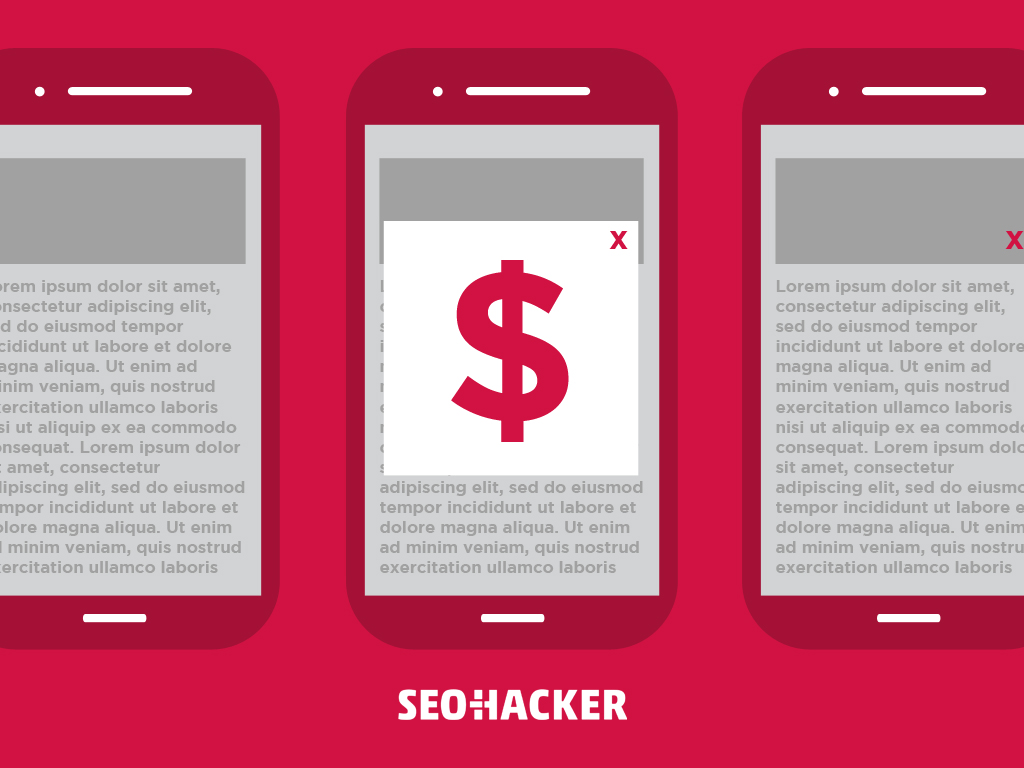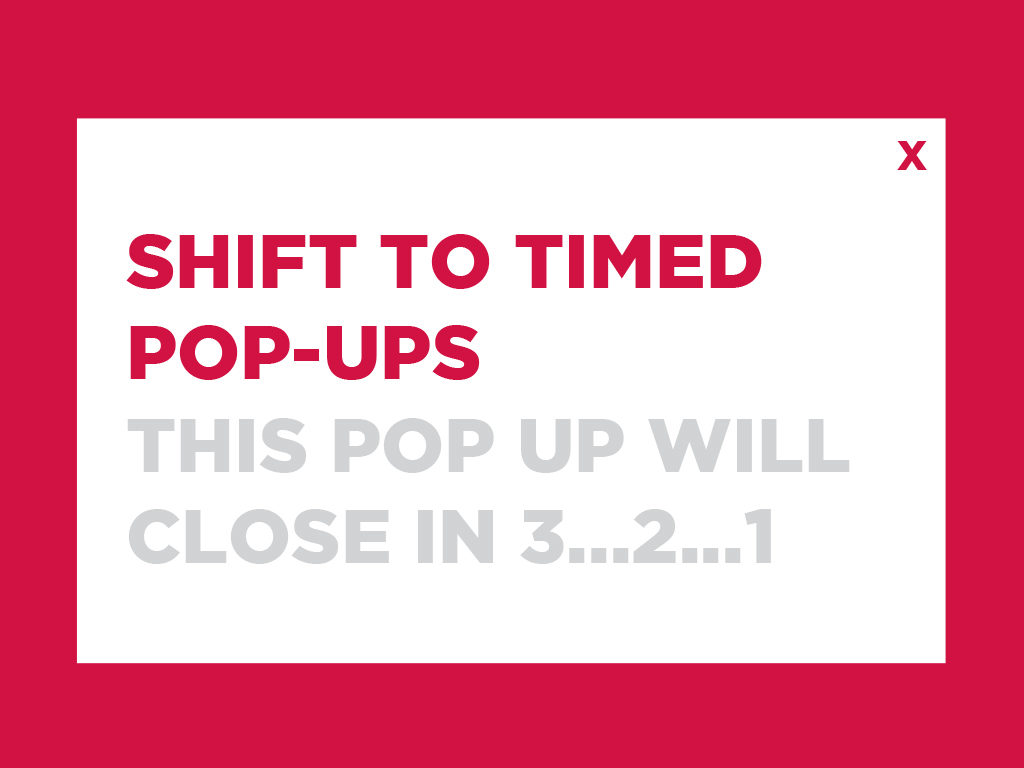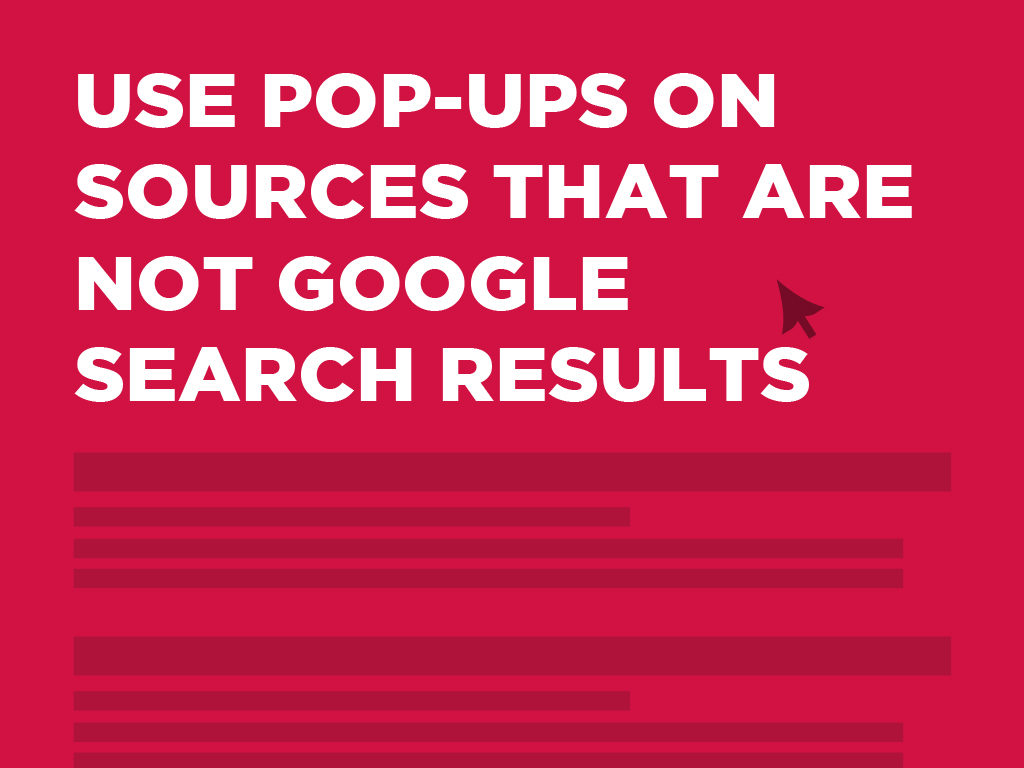How-to Use Pop-Ups Without Negatively Affecting Your SEO
Google’s devaluation of intrusive pop-ups and other invasive interstitials to heighten mobile user experience has affected the overall use of the traditional pop-up. SEO experts have constantly questioned if they should still use the pop-feature or not. At any rate, advertising through pop-ups really do work.
That is why a great number of businesses have expressed dislike on the devaluation of one of their main marketing components. So, what do you do if you still need to use pop-ups or interstitials while not negatively affecting your overall SEO campaign? Well, there are still ways in which pop-ups can be effective. Here are tips that can help you use them without risking your SEO.
Know Which Interstitials Should Not Be Used
The term “interstitial” could mean a variety of things; it mostly applies to pop-ups, modals, and overlays. Google’s penalties are specifically directed to the intrusive interstitials in the mobile platform, but not all interstitials are intrusive.
Essentially, interstitials are spammy, difficult to close, and they lessen the user’s experience on your website. Regarding these group of facts, if you are the webmaster of a site that is riddled with interstitials, then your page might be penalized. At the same time, Google announced that indexing now focuses on the mobile platform, it will considerably affect you search engine results page (SERP) rankings. Here are the examples of intrusive interstitials:
- Pop-ups that cover the content of your page, and forces the users to close the pop-up just to continue reading.
- Standalone interstitials that show up before the user can access the content.
- Pages wherein the layout make the upper portion look like an interstitial.
In the first phone, it is a standard intrusive pop-up. For the second and third phones, it highlights standalone intrusive interstitials. Notice that all of these disrupt your experience while reading the content – which effectively makes them intrusive.
On the other hand, there are also advertisements wherein Google has explicitly shown dislike, and has penalized in the past. They are as follows:
- New window pop-ups that open when a user clicks on your page.
- Classic interstitial and splash advertisements that interrupt the user when they are navigating through your pages on their way to the homepage.
- Overlay modals that are difficult to close, and easily redirect users when they clicked.
- Intrusive lightbox advertisements and pop-ups.
- New window pop-ups, welcome mats, and other intrusive advertisements.
However, Google’s John Mueller confirmed that interstitials triggered by an intent to exit are still allowed. However, it is not good to rely on these types of interstitials because nothing good comes out of annoying your visitors.
Continue the Use of Non-Intrusive Interstitials
As mentioned above, non-intrusive interstitials are still tolerated by Google. These normally include any interstitial that you are legally required to display to restrict content or to simply inform your visitors of anything vital that they may need to be informed about.
Examples of these are cookies use notifications and age verification interstitials.
Other kinds of pop-ups such as slide-ins, inlines, banner ads, and tabs, that take up an understandable amount of the display space are also allowed – as long as they do not. Also, it is important to remember that the preferred space that pop-ups should take up on the page is 15% or less.
If you do not have the sufficient knowledge to determine whether an interstitial is intrusive or not; you should focus on using these specific kinds: top banners and slide-in boxes that allow for continuous viewing while still being able to be closed easily; it also does not ruin the user’s experience. Similarly, full-screen overlays, advertisement modals, and welcome mats should be avoided at all costs.
If you cannot help but depend on the use of pop-ups and other interstitials, you should make it a point to redesign them to be less intrusive as possible. One of the primary changes that you can make is to the timing of each and every interstitial. Instead of showing a pop-up every time a user accesses your page, you can time it to show up at the estimated time when your visitor finishes reading the content.
You can also limit the time wherein a pop-up stays on a page. Always remember that a pop-up that disappears after 3 seconds of inactivity is better than one that does not close automatically. Obviously, these kinds of pop-ups are only as effective as your content. So, if your content cannot make the user stay on the page, they will not be able to see your advertisement. If you notice that this happens regularly, you should first focus on content marketing rather than filling the page with advertisements.
If you notice that this happens regularly, you should first focus on content marketing rather than filling the page with advertisements.
Be Cautious of Ambiguous Interstitials
Yes, they exist. Ambiguous interstitials are the kind that gets penalized without you having the knowledge that they are not allowed. One such example is the language selection pop-ups for international websites because they are still considered as pop-ups; no matter how useful they may be.
You should make it a habit to constantly check the performance of your page if you are using these interstitials: related posts, sticky sidebars, live chat boxes, share buttons, and coupon pop-ups. While they are not proven to negatively affect your SEO campaign, it is always better to be safe than to regret it later on.
Exercise Caution When Using Approved Pop-Ups
Take note that pop-ups are essentially intrusive, however, there are still certain types of interstitials that are tolerated by Google. But, even though they are permitted, they might be penalized in the near future when Google finally decides to get rid of the existence of pop-ups. Examples of permitted pop-ups are:
- Interstitials Triggered by Exit Intent – This was mentioned above, so when you are using this kind of pop-up; you should make sure that you have put a no-index tag in your code to avoid getting penalized.
- Page-to-Page Interstitials – It was mentioned that Google only devalues the interstitials that show when you go from the SERPs to a site page. On the other hand, interstitials that show up when you navigate from site page to another page are still allowed. However, it is common knowledge that Google focuses on improved user experience, so it is not impossible for them to devalue page-to-page interstitials in the near future; because it still lessens user experience.
That is why it is important for you to exercise caution when you use these kinds of interstitials.
Desktop Interstitials are still Allowed
The solution that most webmasters have come up with in regards to the interstitials devaluation is to hide the pop-ups for the mobile platform, but still, retain it in the desktop version. There exists a variety of pop-up plugins that you can use to target only specific kinds of platforms. Also, there are website plugins wherein you can hide all intrusive pop-ups for mobile platforms.
Even if this is the case, it is still better to turn away from the use of pop-up advertisements since Google’s goal is to bring about the best user experience. At this rate, interstitials will eventually be devalued and penalized because they are usually associated with giving people a bad user experience.
If you cannot turn away from the use of interstitials, you should find other permanent ways wherein you do not need to hide the pop-ups. Look for other alternatives that you could advertise your website or brand on, other than pop-ups.
Another way in which you can exploit is to put pop-ups in pages that can be accessed through other sources other than from the search results page of Google. This is because Google’s aim is to reduce the pop-ups that show up when you are directed from their results to a certain site’s page.
However, pop-ups that show up when you came from other sources is still allowed. As long as it is an action between the user and the webmaster, Google will not devalue or penalize anything. They only devalue features that are related to them, so other than the process of going to a website from the search engine results, Google will not do anything.
On the other hand, if your website is dependent on organic searches, and it is an effective way to generate leads, then switching is not a necessity. Just remember that incorporating one or two interstitials is fine, but if you fill your site with numerous pop-ups, you will eventually get penalized.
Key Takeaway
This update regarding the devaluation of pop-ups has been active since early January, so if you did not know about this update; take note of the things mentioned here. Pop-ups are crucial for the advertising or marketing of a certain brand/website, but they sometimes get abused and are disruptive to a visitor’s experience to your website. Hence, if you are dependent of pop-ups and other interstitials, this article will help you.
Can you now “safely” use pop-ups in your mobile SEO strategy? Do you know anything else about the devaluation of interstitials for the mobile platform? Let’s talk about it in the comments below.



